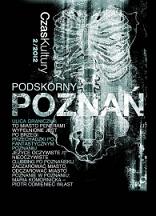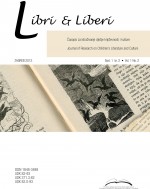
We kindly inform you that, as long as the subject affiliation of our 300.000+ articles is in progress, you might get unsufficient or no results on your third level or second level search. In this case, please broaden your search criteria.




This paper examines the adult gaze on children’s literature through the lens of Eric Tribunella’s article “From Kiddie Lit to Kiddie Porn” (2008) which explores the implications of child sexuality through an examination of Chris Kent’s parodies of The Coral Island by R. M. Ballantyne and Tom Brown’s Schooldays by Thomas Hughes. Introducing Kincaid’s term ‘child-loving,’ I explore the implications of the types of ‘child-loving’ as they are examined in children’s and young adult literature. This paper uses Nothing by Janne Teller, Postcards from No Man’s Land by Aidan Chambers, and Patricia McCormick’s Sold to determine how an adult gaze lands upon childhood sexuality that is averse to the constructed culture of childhood innocence and asexuality, and where then the gaze is averted, implicated or nostalgic. I reference Laura Mulvey (1999) and Clifford Manlove (2007) as my basis for the analysis of the gaze as I aim to define levels of ‘child-loving’ and nostalgic idealizations as an adult gaze complicates desire for the child, innocence, and the past.
More...
A report on the Round Table with the topic Through Reading to Literacy held in Zagreb, Croatia on 8 September 2012.
More...
A review of Brešić, Vinko, ed. 2011. Pjesme i priče. Sabrana djela Ivane Brlić-Mažuranić [Poems and Stories. Collected Works of Ivana Brlić-Mažuranić].
More...
The aim of the paper is to provide an alternative view of the Grimms’ Kinder- und Hausmärchen [Children and Household Tales], often erroneously considered to be a collection of fairy tales. Three genres have been selected as concrete case studies: didactic tales, formula tales, and tall tales. By providing both close readings of individual tales, and comparative readings of selected groups of tales, the paper aims to demonstrate how different criteria may be taken into consideration when classifying tales according to genre. A brief discussion of some of the problems concerning genre classification is followed by separate examinations and discussions of didactic tales, formula tales, and tall tales, as well as their respective sub-types. Most of the selected examples from the Grimms’ collection demonstrate a tendency to borrow and mix (genre-specific) narrative elements, which simply goes to show that the notion of ‘pure’ genre is a false one, and that genre classification still requires much scholarly attention.
More...
A report on conference "Children’s and Young Adult Literature in the Process of Media Convergence" held in Kronberg in Taurus, Germany, 17-19 May 2012.
More...
A report on the international exhibition celebrating the legacy of Grimm's stories.
More...
A report on the The Second Annual Meeting of the Croatian Association of Researchers in Children’s Literature held in Rijeka, Croatia, May 2012.
More...
A review of Hameršak, Marijana's book (2011) Pričalice: o povijesti djetinjstva i bajke [Tellers: On the History of Childhood and Fairy Tales].
More...
A review ofJack Zipes' book "The Irresistable Fairy Tale: The Cultural and Social History of a Genre" (2012).
More...
This paper aims to mark the occasion of the 80th birthday of Zvonimir Balog, one of the greatest Croatian children’s poets, and to describe his immense contribution to Croatian children’s literature. His Selected Works, published in 2007, make his work more widely available not only to the general reader, but also to scholars, thus preparing the way for a comprehensive critical evaluation. As the award-winning author of more than seventy books for children and adults, an essayist, novelist, playwright, illustrator, and editor of children’s magazines, he takes a special place in Croatian culture. This paper also shows how Zvonimir Balog creates a nonsense grammar of his own, adopts an original approach to picture poetry, and engages in passionate wordplay, becoming equally appealing to adults and children. Literary critics are particularly interested in his language and style. His unique expression is one of the reasons why Zvonimir Balog is considered to belong to the founders of contemporary Croatian children’s poetry.
More...
A review of Dubravka Zima's book "Kraći ljudi: povijest dječjeg lika u hrvatskom dječjem romanu" [Shorter People: The History of Child Characters in Croatian Children’s Novels](2011).
More...
A report on the 33rd IBBY International Congress held in London, UK, August 2012.
More...
A review of Marcel Cukli's, Borivoj Dovnikovic's & Mladen Bjazic's book "Izgubljeni svijet" [The Lost World] (2011).
More...


This paper examines the representation of female antagonists in three popular children’s books – C. S. Lewis’s Narnia books, Roald Dahl’s The Witches, and Philip Pullman’s The Amber Spyglass – by referencing Kristeva’s theory of abjection and Creed’s discussion of the monstrous-feminine. In both the Narnia series and The Witches, female antagonists are simplified, stereotyped and negatively portrayed as evil figures that threaten the stability of a well-ordered community. They are represented as the abject that blurs the borderlines between life and death, human and non-human, masculine and feminine. At the end of both narratives, the monstrous-feminine is ejected, eliminated, and the ‘purification’ brings relief and a vengeful pleasure. In Pullman’s book, the harpies are represented as monsters that can be reasoned with. They are honoured as generous and “Gracious Wings”. Yet, while the attempt of positive reinvention of the monstrous-feminine is noticeable, they play only a secondary role acknowledged by the symbolic order – the monstrous-feminine stereotype is nevertheless perpetuated.
More...
The paper deals with the prompt, intense, diverse, and contradictory Croatian reception of the lives and works of Jacob and Wilhelm Grimm. After a short overview of early nineteenth-century references to the Grimms in Croatian daily newspapers, cultural magazines and professional and academic journals, the paper focuses on the history of Croatian translations and adaptations of their tales. The prompt reception of the brothers’ work in the field of nineteenth-century Croatian scholarship, politics, and culture is juxtaposed to the relatively delayed appearances of the translations and adaptations of their tales, Besides, even when published, the Croatian versions were hardly ever attributed to the Grimms prior to the early twentieth century. During the second half of the nineteenth century, individual tales were translated, adapted and published in Croatian children’s magazines and books of stories almost a hundred times, with virtually no references to the brothers (there is only one exception) or to their original collection. The paper presents the first Croatian appearances of tales that can be traced to the Grimms’ original work, Kinder- und Hausmärchen, i.e. the nineteenth-century Croatian translations or adaptations of individual tales which were mostly not attributed to the Grimms, but rather presented as stories, anonymous tales or vernacular (Croatian, Slavic, etc.) folktales. These adaptations and retellings are considered from the perspective of a complex relationship between cultures, literatures, and translation practices, particularly with reference to the ideas of original work, authorship and anonymity.
More...